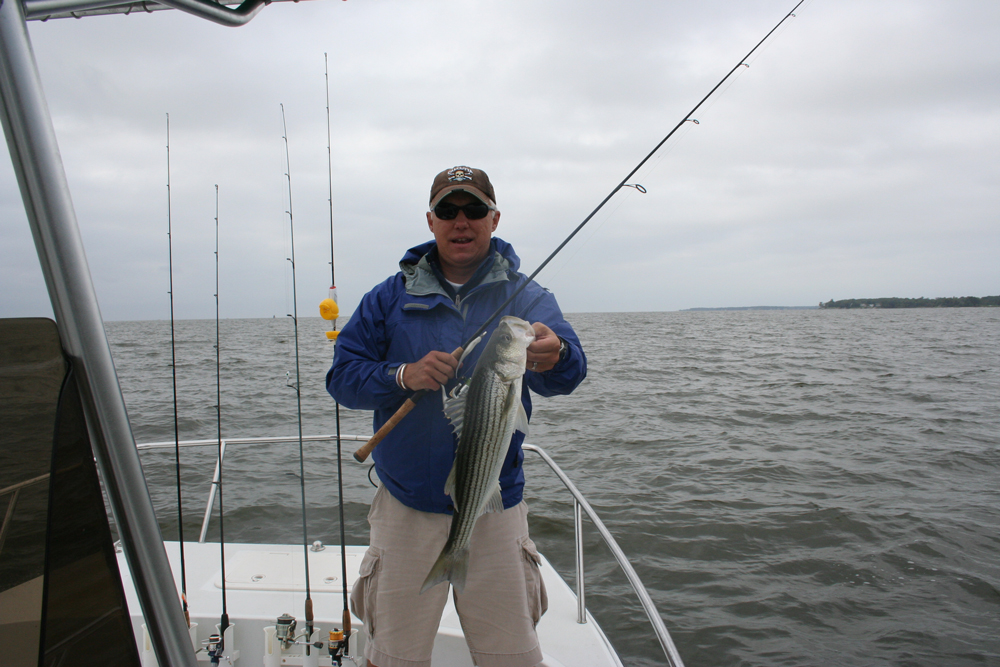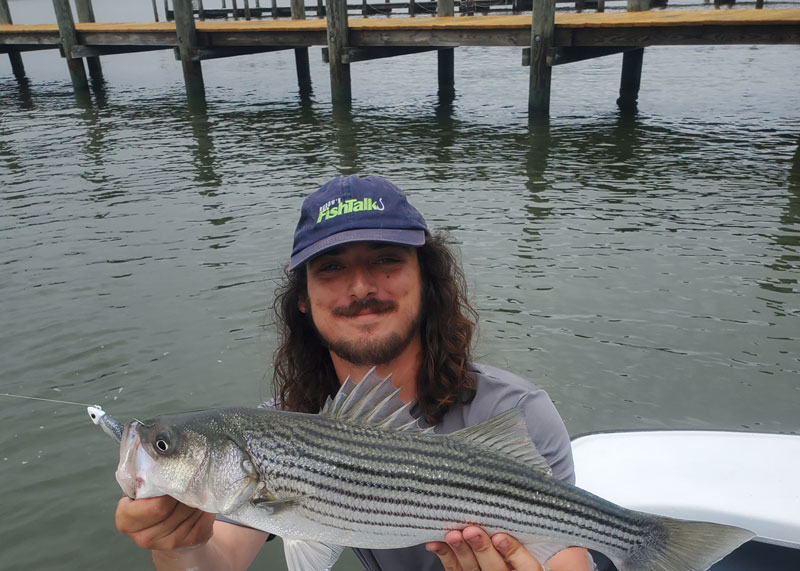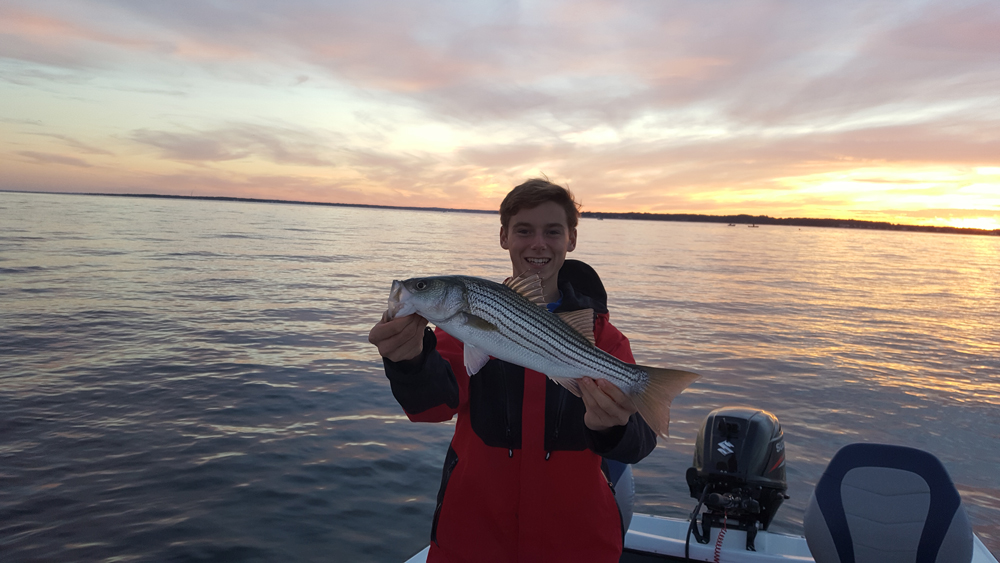Is the heat of summer giving you the blues, when it comes to jigging for stripered bass? Well, here’s some good news—it always feels cooler out on the water. So when sweat starts pouring down your brow reach for your jigs and your boat keys, and hit the bay in search of summer-time stripers.

Heat of Summer
You can take comfort in the fact that you’re not the only one being affected by the heat. It’s having a serious impact on the fish, too. For many anglers this is problematic, but for a Chesapeake jigger in the know, it’s an advantage. First and foremost, remember that as the mercury rises the stripers want to go as deep as possible, where cooler waters lie. But, they have a problem: dead zones. Many areas of the Bay deeper than 25 or 30 feet go anoxic during the dog days of summer. With a little help from your good friend Google, you can see maps of previous dead zones to get an idea of where they usually form. And you can check Eyes on the Bay to see where dead zones are currently formed. Pay close attention to where these areas intersect with structure. Often the fish will congregate just above the depth of the anoxic water where it’s as cool as possible, and naturally the presence of structure will often hold them there.
A prime example is The Hill, located at the mouth of Eastern Bay. (See Fishing in Eastern Bay to nail down this location in detail). Although this is historically a spot most of us think of for trolling and chumming, jigging a soft plastic in the 22 to 35 foot depth range when you spot clusters of fish along the drop-offs at The Hill can be deadly in mid-summer. Other good examples of such spots include the drop-offs west of Kent Island and Love Point, and the 20- to 30-foot contour running down the western shore from Franklin Manor to Cove Point.
You do have to remember, of course, that the exact locations and expansiveness of dead zones shift from year to year and even week to week. Strong wnds or storms may also mix the waters, and change the dead zone areas. What counts is being cognizant of their existence, and looking for intersections with structure just above its depth zone.
Shady Jigging Maneuvers
When the August sun is beaming down and there’s shade nearby, do you let yourself get baked by UV rays or do you seek shelter? The answer is obvious, yet anglers rarely recognize that fish often feel the same way.
Shallow water jiggers are probably the most apt to notice this, since they usually know that boathouses and piers are excellent targets once the sun has broken the horizon. (Hint: in the shallows, cooler low-light periods such as dawn and dusk are always prime-time). In fact, skipping a lure underneath a pier is often the ticket to success. And boathouses, with their larger shadows, sometimes hold rather hefty schools of fish. (White perch anglers take note—this species also loves congregating under boat houses!)

Open water anglers should also think about shade, however. While shade is hard to come by in the middle of the Bay, it isn’t unheard-of. Ships anchored off Annapolis, for example, often have hordes of fish hiding underneath their hull during the summer. (Read Striper Tactics: Hit the Ships, if you're not used to fishing around these mobile structures). Try fishing the sunny side and the shaded side, and you will notice a difference. The shade cast by lighthouses can also be quite productive when the sun is beating down.
Current and Light Levels
Another thing fish look for when it’s hot out is moving water. High-current areas are cooler than more stagnant areas and also tend to have higher oxygen content. The Chesapeake Bay Bridge is an obvious example—here you get not only fast-moving water, but also shade. It’s not a coincidence that the bridge often holds feeding fish throughout the heat of the summer.
You’ll find the same is true where tidal ponds flow out into tributaries on a falling tide, especially in the morning hours when the water in those ponds has cooled faster than the bay water did overnight. Many of the bridges built across tributaries up and down the bay (which are often built at choke-points where currents generally flow stronger than surrounding areas) also offer good current and shade.

Taking these three major factors—the dead zone, shade, and current—into account is a good start for anglers going after striped bass in the mid-summer heat. But there are, of course, more things to consider. Time of day (as it relates to the angle of the sun or lack thereof) can become more important than ever. Timing your fishing with the tides, and thus the currents, sometimes takes on even more importance. And rainy days present a good opportunity to enjoy prime fishing. Then again, any day presents a good opportunity to go fishing. And remember, it always feels cooler out on the water.
- By Lenny Rudow
Editor's note: This article was originally published in August of 2017 and was last updated in June of 2024.